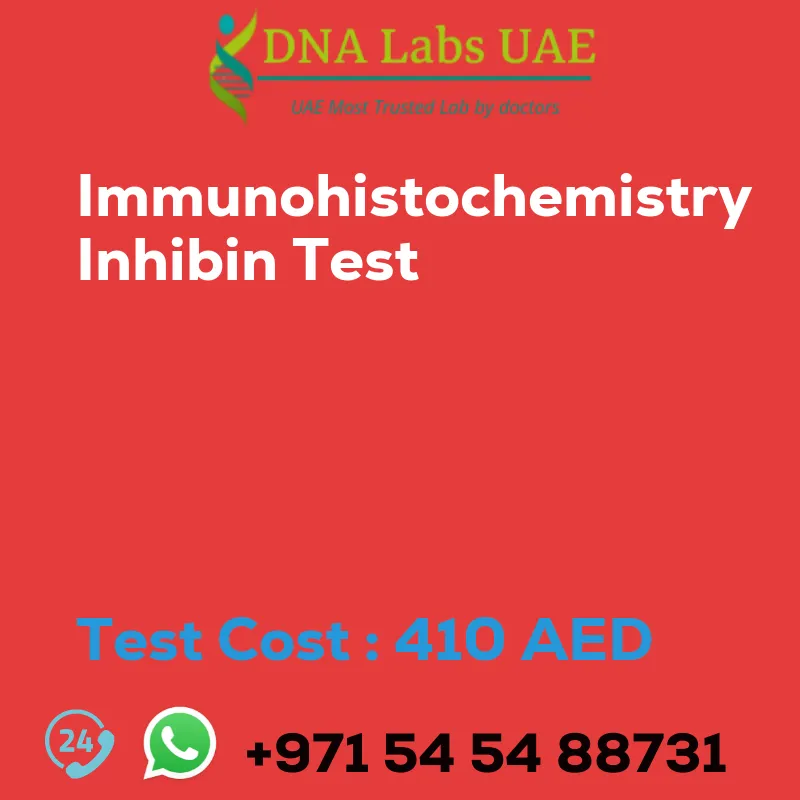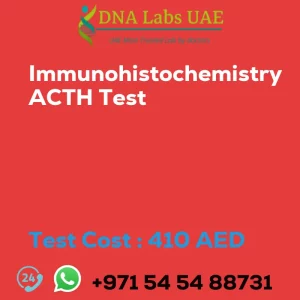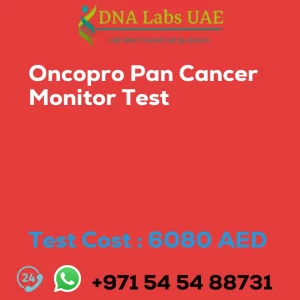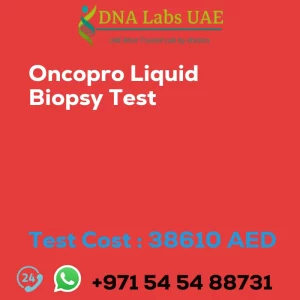IMMUNOHISTOCHEMISTRY INHIBIN Test
Test Name: IMMUNOHISTOCHEMISTRY INHIBIN Test
Components: Inhibin
Price: 410.0 AED
Sample Condition: Submit tumor tissue in 10% Formal-saline OR Formalin fixed paraffin embedded block. Ship at room temperature. Provide a copy of the Histopathology report, Site of biopsy and Clinical history.
Report Delivery: Sample Daily by 6 pm; Report Block: 5 days, Tissue Biopsy: 5 days, Tissue large complex: 7 days
Method: Immunohistochemistry
Test Type: Cancer
Doctor: Oncologist, Pathologist
Test Department: DNA Labs UAE
Pre Test Information: Provide a copy of the Histopathology report, Site of biopsy and Clinical history.
Test Details
Immunohistochemistry (IHC) is a technique used to detect specific proteins in tissues using antibodies that bind to the target protein. It is commonly used in research and diagnostic laboratories to study the distribution and expression of proteins in various tissues.
Inhibin is a protein hormone that is primarily produced by the ovaries and testes. It plays a role in regulating the production of follicle-stimulating hormone (FSH) in the pituitary gland. In women, inhibin is produced by the granulosa cells of ovarian follicles, while in men, it is produced by Sertoli cells in the testes.
The inhibin test using immunohistochemistry involves the following steps:
- Tissue sample preparation: A tissue sample is collected, typically through a biopsy or surgical procedure. The sample is then processed and embedded in paraffin or frozen for sectioning.
- Sectioning: The tissue sample is cut into thin sections, usually around 4-6 micrometers thick, using a microtome. These sections are then mounted onto glass slides.
- Antigen retrieval: If necessary, antigen retrieval may be performed to improve the accessibility of the target protein. This step involves treating the tissue sections with heat or enzymes to reverse the cross-linking and allow better antibody binding.
- Blocking: To prevent non-specific antibody binding, the tissue sections are treated with a blocking solution, such as serum or bovine serum albumin (BSA).
- Primary antibody incubation: The tissue sections are incubated with a primary antibody specific to inhibin. This antibody recognizes and binds to the target protein in the tissue.
- Secondary antibody incubation: After washing off any unbound primary antibody, the tissue sections are incubated with a secondary antibody conjugated to a detection system, such as a fluorescent dye or enzyme.
- Visualization: The bound secondary antibody is visualized using a microscope or other imaging systems. Fluorescent dyes emit light of a specific wavelength when excited by a specific light source, while enzyme-based detection systems produce a color change upon substrate addition.
- Counterstaining: To visualize the tissue structure and enhance contrast, the tissue sections may be counterstained with dyes like hematoxylin or eosin.
The result of an inhibin immunohistochemistry test can help determine the presence, distribution, and intensity of inhibin expression in the tissue sample. It can be used to study various diseases and conditions related to inhibin, such as ovarian tumors, testicular tumors, and disorders of reproductive function.
| Test Name | IMMUNOHISTOCHEMISTRY INHIBIN Test |
|---|---|
| Components | |
| Price | 410.0 AED |
| Sample Condition | Submit tumor tissue in 10% Formal-saline OR Formalin fixed paraffin embedded block. Ship at room temperature. Provide a copy of the Histopathology report, Site of biopsy and Clinical history. |
| Report Delivery | Sample Daily by 6 pm; Report Block: 5 days Tissue Biopsy: 5 days Tissue large complex : 7 days |
| Method | Immunohistochemistry |
| Test type | Cancer |
| Doctor | Oncologist, Pathologist |
| Test Department: | |
| Pre Test Information | Provide a copy of the Histopathology report, Site of biopsy and Clinical history. |
| Test Details |
Immunohistochemistry (IHC) is a technique used to detect specific proteins in tissues using antibodies that bind to the target protein. It is commonly used in research and diagnostic laboratories to study the distribution and expression of proteins in various tissues. Inhibin is a protein hormone that is primarily produced by the ovaries and testes. It plays a role in regulating the production of follicle-stimulating hormone (FSH) in the pituitary gland. In women, inhibin is produced by the granulosa cells of ovarian follicles, while in men, it is produced by Sertoli cells in the testes. The inhibin test using immunohistochemistry involves the following steps: 1. Tissue sample preparation: A tissue sample is collected, typically through a biopsy or surgical procedure. The sample is then processed and embedded in paraffin or frozen for sectioning. 2. Sectioning: The tissue sample is cut into thin sections, usually around 4-6 micrometers thick, using a microtome. These sections are then mounted onto glass slides. 3. Antigen retrieval: If necessary, antigen retrieval may be performed to improve the accessibility of the target protein. This step involves treating the tissue sections with heat or enzymes to reverse the cross-linking and allow better antibody binding. 4. Blocking: To prevent non-specific antibody binding, the tissue sections are treated with a blocking solution, such as serum or bovine serum albumin (BSA). 5. Primary antibody incubation: The tissue sections are incubated with a primary antibody specific to inhibin. This antibody recognizes and binds to the target protein in the tissue. 6. Secondary antibody incubation: After washing off any unbound primary antibody, the tissue sections are incubated with a secondary antibody conjugated to a detection system, such as a fluorescent dye or enzyme. 7. Visualization: The bound secondary antibody is visualized using a microscope or other imaging systems. Fluorescent dyes emit light of a specific wavelength when excited by a specific light source, while enzyme-based detection systems produce a color change upon substrate addition. 8. Counterstaining: To visualize the tissue structure and enhance contrast, the tissue sections may be counterstained with dyes like hematoxylin or eosin. The result of an inhibin immunohistochemistry test can help determine the presence, distribution, and intensity of inhibin expression in the tissue sample. It can be used to study various diseases and conditions related to inhibin, such as ovarian tumors, testicular tumors, and disorders of reproductive function. |







